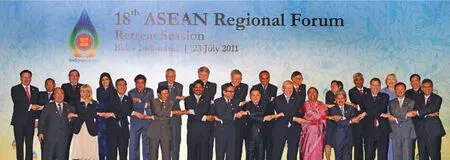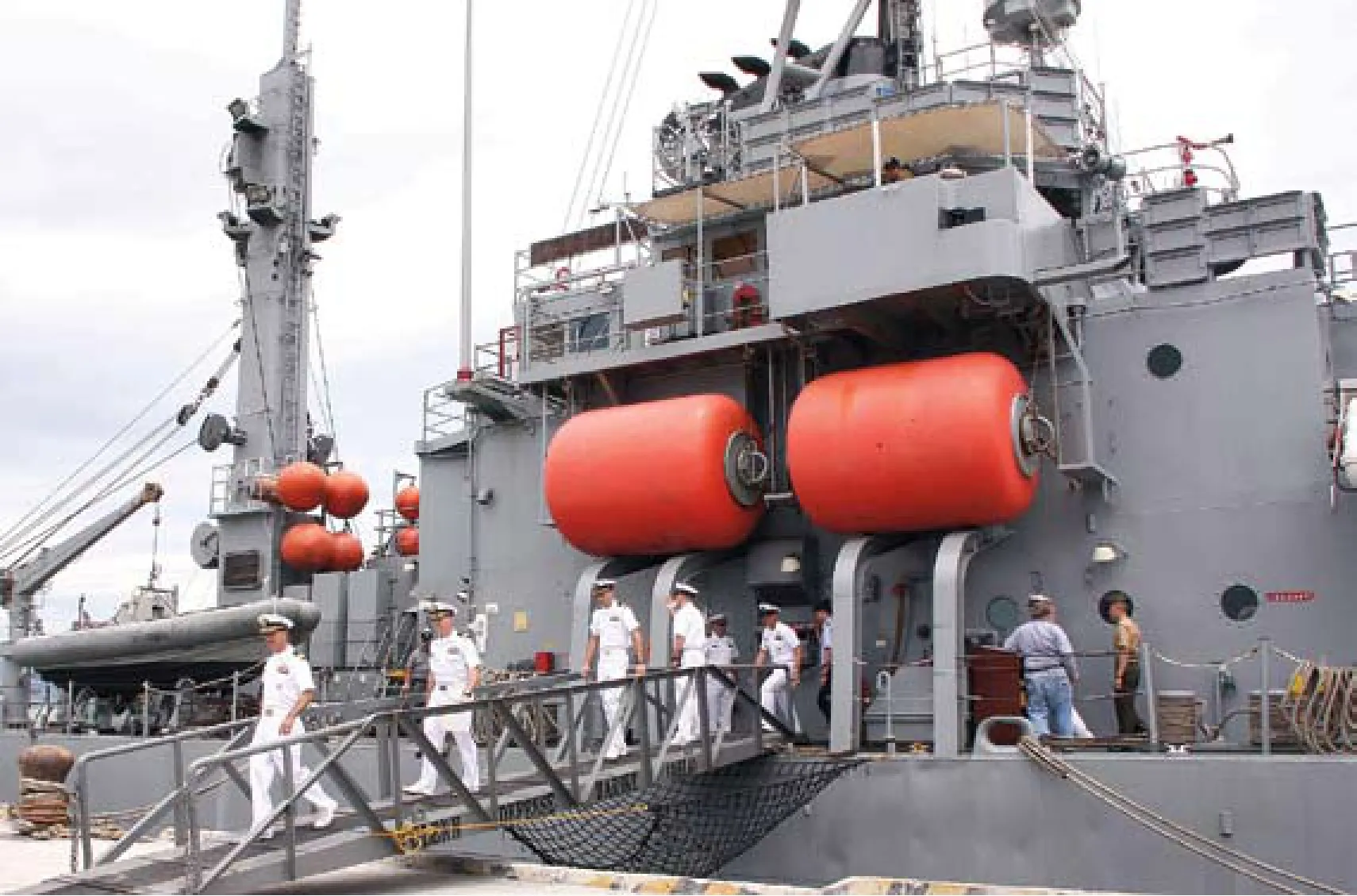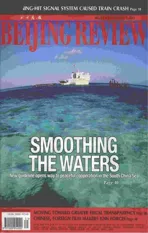BRIDGE OVER TROUBLED WATER
2011-10-14ByYUYAN
By YU YAN
BRIDGE OVER TROUBLED WATER
By YU YAN
Guideline sets foundation for China and ASEAN to resolve the South China Sea dispute
China and ASEAN countries have reached an agreement on a guideline for implementing the Declaration on the Conduct of Parties in the South China Sea (DOC), which lays a solid foundation for their practical cooperation and will be helpful for the settlement of disputes in the area, said Chinese offcials and scholars.
The guideline is encouraging, as it consolidates the principles of “peaceful solution, consultation and joint development,” said Tao Wenzhao, a senior research fellow with the Institute of American Studies at the Chinese Academy of Social Sciences.
The agreement was reached on July 20 during the series of ASEAN foreign ministers’ meetings in Bali, Indonesia. The eight days of events from July 16-23 included the 44th ASEAN Foreign Ministers’ Meeting, the ASEAN-China Foreign Ministers’ Meeting, the ASEAN Plus China, Japan and South Korea Foreign Ministers’ Meeting, the East Asia Summit Foreign Ministers’ Consultation and the 18th ASEAN Regional Forum Foreign Ministers’ Meeting.
Calming territorial rows
The guideline, along with consensus on future cooperation in the South China Sea, has attracted attention because in recent months there has been a fare-up in territorial spats between China and neighboring Southeast Asian nations.
In April, the Philippines filed a note with the UN, claiming sovereignty over parts of China’s Nansha Islands. Three months later, a group of Philippine lawmakers visited one of the disputed islands in the South China Sea. In addition, the United States have recently held joint military exercises with the Philippines and Viet Nam respectively in the area.

ChEN DUO
The Nansha Islands in the South China Sea have long been acknowledged as Chinese territory. Since the early 1970s after the region was found to be rich in oil and other natural resources, however, Southeast Asian countries including Viet Nam, the Philippines, Malaysia and Brunei have claimed sovereignty over all or part of the islands.
China and ASEAN signed the DOC in 2002, pledging to solve South China Sea dispute through peaceful means.
The newly adopted guideline pointed out the direction for the implementation of the DOC and defned the principles for future cooperation in the area, China’s Ambassador to ASEAN Tong Xiaoling told Xinhua News Agency.
With the guideline in place, the countries will shift their focus to practical cooperation instead of empty talk, said Tong.
She said China and ASEAN countries could establish working groups and special committees to carry out less sensitive cooperative projects in the South China Sea, such as maritime safety, marine biology and seismic explorations.
“Although there were discordant voices and actions over the South China Sea issue before the series of ASEAN foreign ministers’ meetings opened, the passing of the guideline refected the countries in the region have a strong desire to cooperate and hope to strengthen mutual trust,” said Zhang Jiuhuan, a diplomat who previously served as China’s ambassador to countries including Singapore and Thailand.
It was agreed at the meetings, since 2011 marks the 20th anniversary of dialogue between China and ASEAN countries and 2012 marks the 10th anniversary of the signing of the DOC, the parties should make the best of this opportunity to make cooperation the central theme of South China Sea discussions.
China and ASEAN countries pledged in the DOC they would carry out cooperation in marine environmental protection, scientific research, navigation safety, search and rescue and combating transnational crimes before reaching a comprehensive and permanent settlement of the South China Sea dispute.
Since the signing of the DOC, China and ASEAN countries, guided by its purpose and principles, have maintained close communication and active discussions on cooperation. They have held two senior offcials’ meetings, and set up a joint working group, which has held six meetings.
During the meetings, the two sides decided to conduct six cooperative projects such as disaster prevention and mitigation, marine search and rescue and scientific research in the South China Sea, of which China and ASEAN countries will each undertake three projects.
The follow-up actions to the implementation of the DOC have become an important platform for China and ASEAN countries to continue dialogue and cooperation concerning the South China Sea, and have played an irreplaceable role in maintaining stability in the area and deepening the China-ASEAN strategic partnership, said China’s Foreign Ministry.
Maintaining cooperation
The heated dispute in recent months produced negative impacts on China-ASEAN relations, said Jin Canrong, Associate Dean of the School of International Studies at Renmin University of China.
Jin toldBeijing ReviewViet Nam and the Philippines adopted a number of strategies to gain an advantage. These include uniting to negotiate with China; turning the South China Sea dispute into a problem between China and the whole of ASEAN; making the dispute international and submitting it to the UN; and seeking support from the United States.
Presently, China is dealing with the issue cautiously, trying to prevent it from being changed into a problem between China and the whole of ASEAN, said Jin.
Su Hao, a researcher on Asia-Pacific studies with the China Foreign Affairs University, said ASEAN integration is currently the most important task for member countries, and China strongly supports this. This major task should not be stopped by the South China Sea dispute. Cooperation will remain the mainstream of future China-ASEAN relations, Su said.
Some ASEAN countries’ inviting U.S. intervention has violated the provisions of the DOC, which forbid behavior complicating and escalating disputes, and affecting peace and stability, he said. Their attempts may hinder progress in the fourishing China-ASEAN cooperation.
China and ASEAN enjoy a sound foundation of cooperation. On January 1, 2010, the China-ASEAN Free Trade Area was launched as the biggest free trade area among developing countries. In 2010, trade volume hit $292.78 billion, a 37-fold increase over 1991. China is ASEAN’s biggest trade partner, and ASEAN has replaced Japan as China’s third largest trade partner.
By the end of June, two-way investment between China and ASEAN had reached nearly $80 billion, of which China’s investment in ASEAN countries had totaled $13 million, said China’s Ministry of Commerce.
China and ASEAN countries are geographically close and their economies are highly complementary. The two sides’efforts to establish mutual trust through dialogue, jointly solve shared problems and deal with the global crisis are conducive to stability and development in the region and beyond, said Huang Xingyuan, Secretary General of the Chinese People’s Institute of Foreign Affairs.
Given their lasting and solid relationships, the two sides should uphold the spirit of cooperation, rather than fall into wrestling over contentious issues such as the South China Sea, Huang said.
U.S. intervention unwelcome
The South China Sea dispute focuses on three aspects: ownership of the Nansha Islands, use of marine resources and freedom of navigation. The first two aspects have nothing to do with the United States, so it had grasped the third—freedom of navigation, trying to give a certain legitimacy to its involvement in the South China Sea issue, Jin said.
China has indisputable sovereignty over the islands in the South China Sea and their surrounding waters. Freedom of navigation by the United States has never been a problem in the area, said Cai Penghong, a researcher on Asia-Pacifc studies with the Shanghai Academy of Social Sciences.
On the South China Sea issue, China firmly opposes the intervention of the United States and other countries, Cai said.

LI LIN
“The possibility is not excluded that some ASEAN member countries, for their own interests, turn to the United States with the purpose of containing China’s strength in the region. We believe ASEAN as a whole will not allow the United States to dominate the issue,” he said.
There are channels for China and the United States to carry out anti-piracy patrols, humanitarian assistance and other non-traditional security cooperation in the South China Sea, Cai said.
“Navigation in the South China Sea is free and the international shipping lanes are safe,” said Chinese Foreign Minister Yang Jiechi on July 23 during the ASEAN Regional Forum Foreign Ministers’Meeting. “It is fair to say that countries in and outside the region all beneft from freedom of navigation and safety in the area.”
The disputes over some islands and reefs and maritime delimitation of the South China Sea are one issue. Freedom of navigation in the South China Sea is a separate issue. The two issues should not be mixed up, Yang said.
“Countries in the region should enhance connectivity and increase trade,”Yang said. “Countries outside the region, particularly developed economies, should make full use of the convenience brought about by freedom of navigation to step up mutually beneficial cooperation and support the progress and prosperity of the developing countries in the region.”
